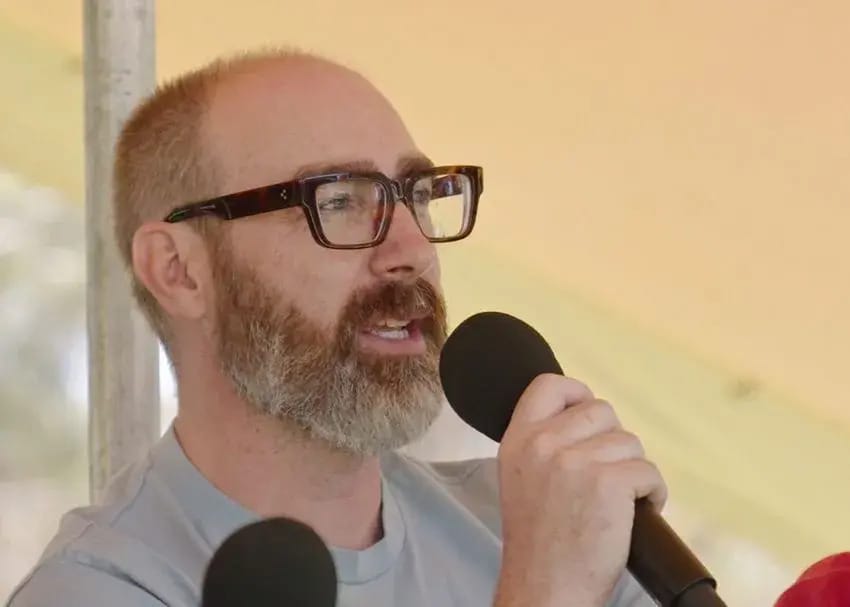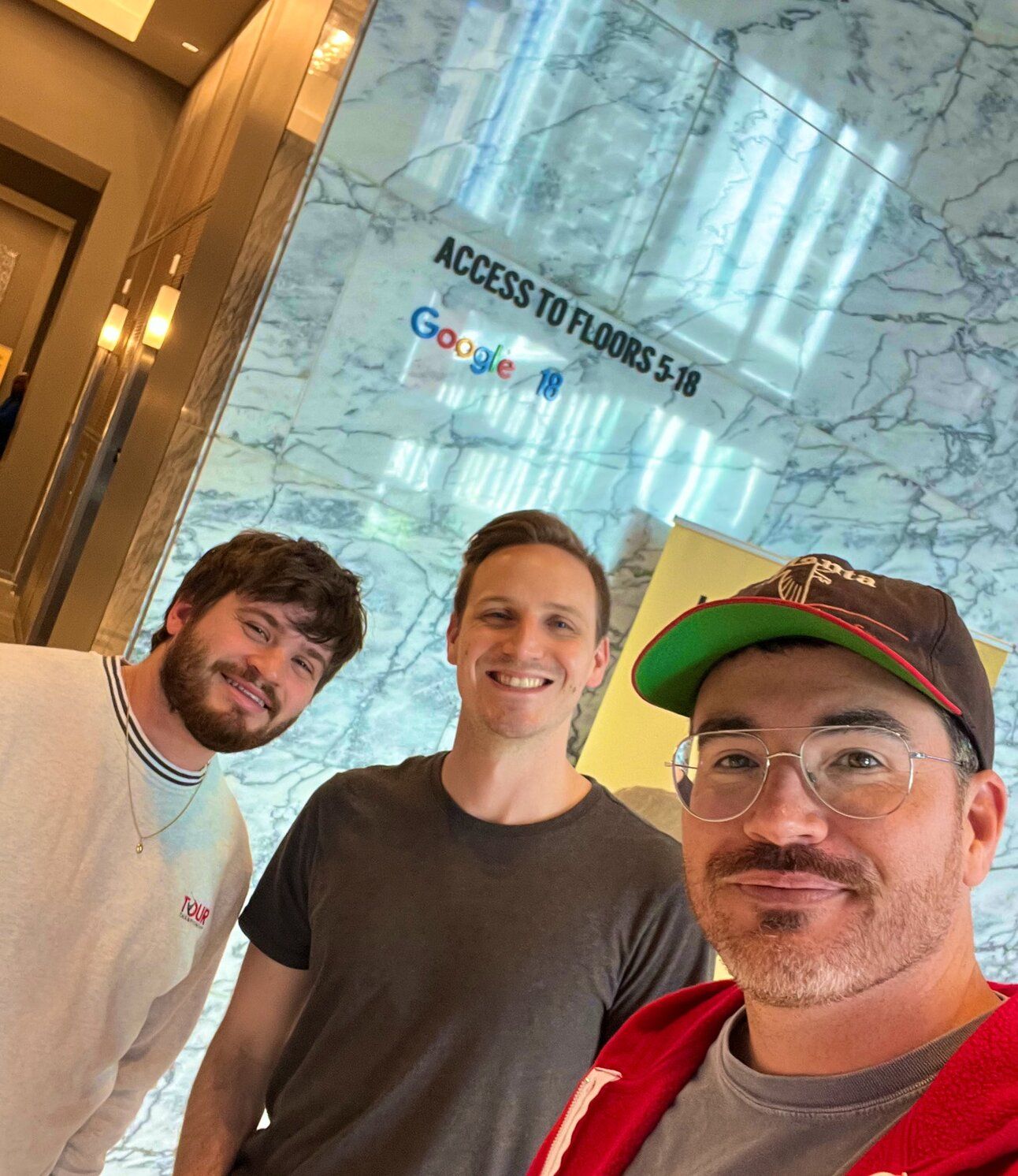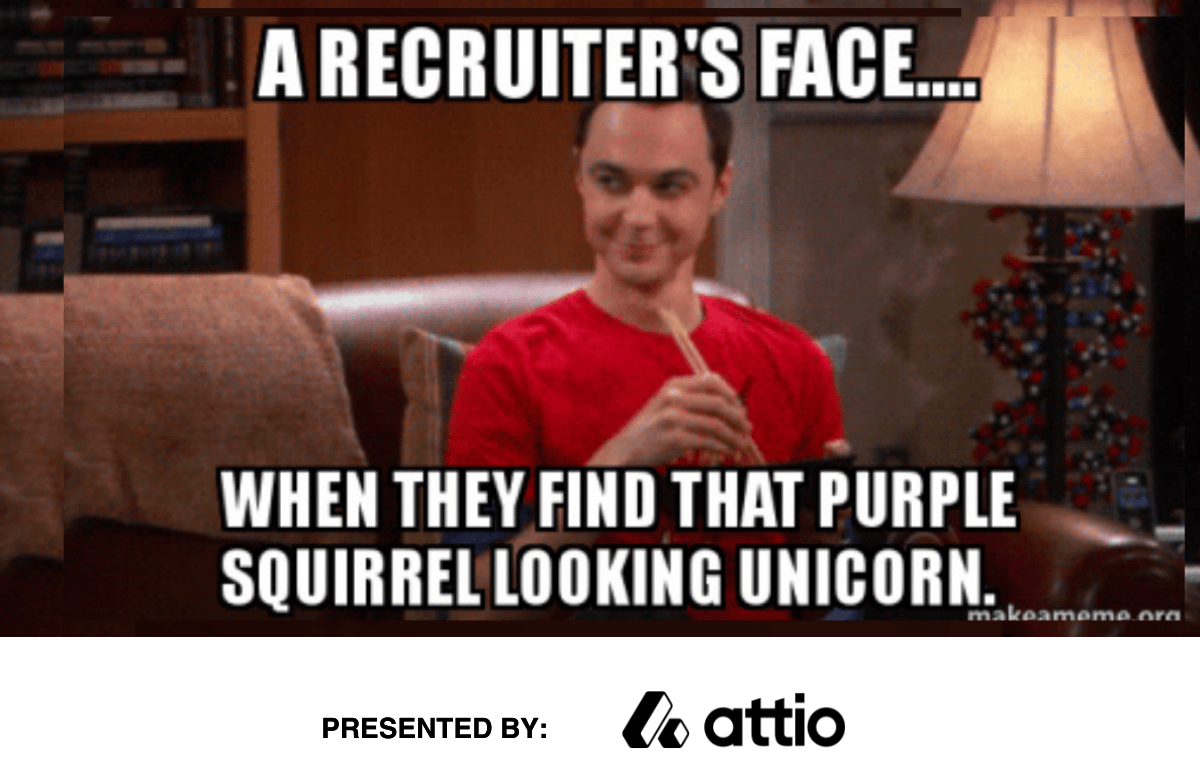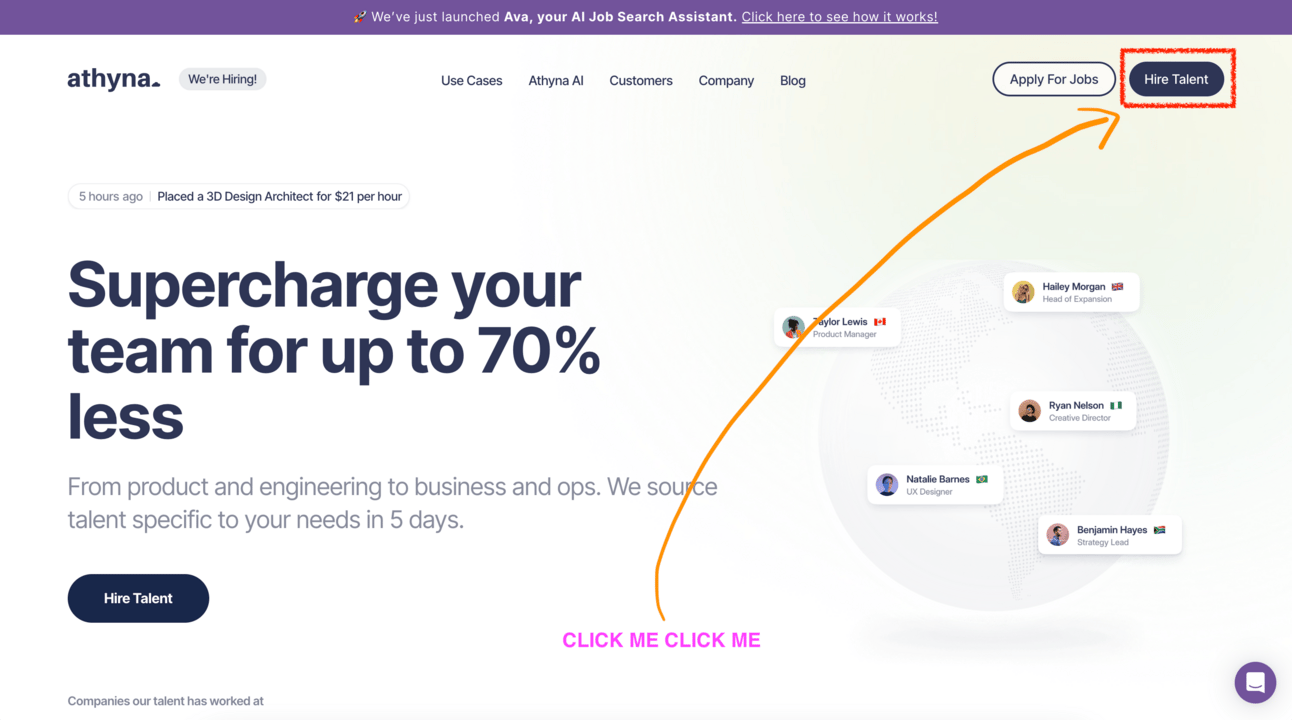- Open Source CEO by Bill Kerr
- Posts
- Collection: How Do You Hire All-Star Talent?
Collection: How Do You Hire All-Star Talent?
A collection of thoughts from a collection of leaders. 🌱
👋 Howdy to the 1,154 new legends who joined this week! You are now part of a 134,004 strong tribe outperforming the competition together.
LATEST POSTS 📚
If you’re new, not yet a subscriber, or just plain missed it, here are some of our recent editions.
🏦 Open Sourcing My Investment Portfolio. Here is what my budding little investment portfolio looks like.
💰 How beehiiv Raised $50M (Fast). A step-by-step guide to raising capital and raising well.
🌳 16 Ways To Make Your Business More Amazonian. How to take Amazon's leadership principles and apply them to your own business.

PARTNERS 💫
AI-native CRM.
Attio is the CRM for the AI era. Connect your email, and Attio instantly builds your CRM with enriched, actionable data.
Then unleash the full power of the platform—from AI-powered automations to research agents, Attio can handle some of your most complex operational processes like finding key decision makers and triaging leads.
Join industry leaders like Flatfile, Replicate, Modal, and more. Start for free.
Interested in sponsoring these emails? See our partnership options here.

HOUSEKEEPING 📨
Been really enjoying the always-on, Technology Brothers lately. If you’re not already following along, these two buttoned up gents, Jordi and John, are live-streaming for 3 hours daily on all things tech, fundraising, markets and more. The interesting thing with volume like that is once you become comfortable with it, it can become background noise in the house. The soundtrack to your life.
I'm joining the war on big tech on the side of big tech
— Jordi Hays (@jordihays)
4:32 PM • Apr 24, 2025
For example, I watch every second of All-In every week on Friday night or Saturday morning. I treat it as appointment viewing. But that’s because it’s one or two hours a week. When you stream for 15+ hours, unless you are a total weirdo, you can never consume it all. One analogy is the summer in Australia where the sound of test cricket becomes the background noise of your life. A test cricket match is 8-10 hours a day, for five days straight. Again, background noise.
It pays to be a totally ubiquitous, always-on type channel, or appointment viewing. Something to think about there. Anyway, that’s all for today, enjoy today’s collection of thoughts from some of our recent leadership interviews.

COLLECTION 👨👩👧👦
Collection: How Do You Hire All-Star Talent?
Building a company is tough. Hiring great talent, even tougher. Think of it like cooking a Michelin-star-worthy dish. You start with a recipe. Typically something proven, precise, simple. Take the classic Italian pasta dish, Cacio e Pepe: just pasta, pecorino romano cheese, and freshly cracked black pepper. Three ingredients, perfectly balanced, delivering elegance and simplicity.
Now imagine you start improvising—swap out the romano cheese for cheddar and throw in some ketchup instead. Now you've lost the balance, elegance, and purpose. Instead of a Michelin masterpiece, you've got a mess that's a) incoherent, b) tastes terrible, and c) doesn't deliver what it promised. Hiring is exactly the same. Stick to your recipe—clarity of role, defined cultural values, proven skills. When you compromise on these essentials, adding unnecessary or ill-fitting ingredients, your team becomes that ketchup-and-cheddar pasta disaster: confused, ineffective, and far from the excellence you aimed for.

YES CHEF!
Hiring is exactly the same. Each candidate should bring essential ingredients—clear expertise, cultural fit, and proven past performance. When you start compromising and accepting candidates missing these key elements, your team becomes that ketchup-and-cheddar pasta disaster: confused, ineffective, and nowhere near the excellence you initially set out to achieve.
Luckily for you, your chances of hiring well just took a shot in the arm. Today we have a collection of hiring tips from founders, leaders of many shapes and sizes. From a16z backed startups, to half a billion dollar excited founders and everything in between. Bon appetit.
I would say that it's evolved over time. When we first started the company, we were two people, and now we’re 160-ish. So the recruitment strategy has changed. Originally, it was like one degree of separation. We had a no dickheads policy and focused on who we knew was the very best in their field, aligned with us in terms of culture, thinking, and belief system. How do we get them on board, indoctrinate them into our way of doing things, and let them contribute to and build our culture?

That was the very early stages of recruitment. The second phase was growth, as we went from 15 people to 30, then to 50, and eventually to 100. During that phase, it was very much about diversity—making sure we had diversity of thought, skills, experience, and all the different things needed to service a client base that we anticipated would grow from hundreds of thousands, to millions over time. We needed a strong team from all walks of life to provide the solution. That's where we've been for the last few years.
Now, we're moving into this scale situation where we have a full-time in-house recruitment team. We're no longer just using referrals of one degree of separation. We now have a structured recruitment process. Each team leader takes on responsibility, with our people and culture team working alongside them to bring people in. We collect expressions of interest, resumes, conduct interviews, and so on. Typically, we do it in our office, face-to-face, even though we're a hybrid virtual and physical team. We believe so strongly in the culture that we get everyone to come through the office, meet the rest of the team, feel the vibe, and be part of the brand and the team before finalizing recruitment.

Simplify money, amplify life.
Depending on the role we're recruiting for, we have different induction programs. For example, engineers might go through an engineering questionnaire or test, which involves more rigor than hiring someone into our customer support team. Customer support team members need to be great with people, have a good rapport, contribute to the culture, and potentially be 'Up-siders' themselves, or have experience from the other side. So, we have different levels of rigor depending on the role, whether it's design, engineering, support, and so on. For senior roles, we ensure that people fit in with the rest of the senior team, often through group interviews or collaborative opportunities during the process.
That gives a pretty high-level view, but the objective in the process is always cultural fit over anything else. We feel that most skill sets and experiences can be learned, but fitting in with the team and contributing to building that future is something that's difficult to learn and is more innate in people and their comfort level around the rest of the team.
*To see our full interview with Dom, head over here.
John Howard, Founder at Slingshot
Everyone is local, and funny enough everyone has been introduced to us. No recruiting yet but if I were to go that route I would work through highly-vetted introductions. I know good people that know good people. The network is everything.
I’m 40 years old so I’ve been developing this network of friends over my professional career that have lead to lots of introductions. This leads to new sales, meeting incredible people, and wonderful new teammates.
We bring people on contract first, see how they work within the team and role and then move to a full-time position. We still have a few contractors but they are only for part-time things that we do. |  |
*To see our full interview with John, head over here.
Elicia McDonald, Partner at Airtree
Our strategy varies by the team and role, but a priority across all teams is to make our hiring opportunities as accessible and open to everyone. We don't have a huge volume of open roles but when we do have an opening, we share it far and wide using our network, headhunting, posting on our social channels and jobs board, and sharing in our newsletter and other communities to attract a diverse candidate pool.
From an investment team perspective, the interview process involves a screening call, interview, case study, and meet-and-greets with the team to assess cultural fit. Our case study is a mixture of a take-home and in-person task so we can test someone's deep thinking and analytical skills and how they interact and respond in person.
*To see our full interview with Elicia, head over here.
Jamie Turner, CEO at Convex
Our recruitment strategy starts with relying on our network and referrals because they usually provide a better signal. It’s more efficient, saves us time, and has been critical in improving our average interview experience. When searching for candidates, it's unreasonable to guarantee that you're getting the absolute best individual for every position, but working with people you’ve known before lets you start with pre-established trust.
After we get past sourcing, we focus on practices specific to startups and unique to Convex. For example, when hiring engineers, we try to make the interview feel like a real workday. The people doing the interviews are the kind of folks we want more of, so it's crucial they feel genuinely excited about working with the candidate. We create scenarios where the interviewer and interviewee collaborate, simulating actual work to see if the candidate is not only technically adept but also inspiring and engaging.
Convex team is killing it right now. I feel so fortunate to work with all of them.
— Jamie Turner (@jamwt)
2:37 PM • Apr 4, 2025
Another key part of our strategy is assessing how candidates handle ambiguity, which is crucial for startups. Some amazing engineers and fantastic coworkers might not be the best fit for a startup if they prefer problems that are clear and well-defined, where they can be sure they did the right thing at the end of the day. Startups often operate in a gray area, launching projects without knowing if they'll matter. So, we try to find people who thrive on ambiguity and find it exciting, not terrifying.
*To see our full interview with Jamie, head over here.


Scott Leese, Fractional CRO & GTM Advisor
*Scott is an investor and advisor, so he is speaking broadly about the GTM hiring and culture in the startups he works with when answering this question.
First and foremost, you have to sell something that works. The product has to be good; it has to solve major pain points. It can’t just be a nice-to-have little widget. If you’re aiming to build a super successful sales culture, your product needs to be something that people can’t do their work without.
You’ve got to provide opportunities and be supportive. This means offering a clear career path, investing in coaching, enablement, proper onboarding, continuing education, and helping people with their pitch. If someone wants to move from an individual contributor to leadership, you should support that. Spend time with your team, genuinely care about what’s going on in their lives. Have one-on-ones that aren’t just about pipeline reviews—ask, ‘How’s it going, Bill? How’s your health? How’s your family? What are you working on? What’s your goal? What are you trying to do next? Are you trying to buy a house, get a down payment?’ And then, ‘How can I help?’

Mentorship is important.
In my experience, this is what creates a culture that attracts, not repels. When you do it right, recruiting becomes easy because word of mouth travels fast. People hear about it and start asking, ‘Is this a good place to work?’ I used to have interviewees come in and ask me that, and I’d say, ‘I don’t know, go ask all those people on the floor.’ I’d let them talk to everyone, no restrictions. If I’ve done my job, my team shouldn’t say anything I’d be embarrassed about or that would turn off a good candidate. And if they do tell the truth and it scares someone off, well, maybe that person wasn’t the right fit anyway.
Transparency helps a lot, as does access to information and the right people. But at the end of the day, it’s all about genuinely giving a shit about helping your team members get where they want to go. It’s not about me hitting numbers or looking good. If I can help Bill achieve his goals, and he moves on in two years because we don’t have the right role for him, I’ve still done my job as a leader. We, as a company, will have invested in a really good employee who goes on to do something great, and that reflects well on us, not badly.
*To see our full interview with Scott, head over here.
A very serious note on hiring
I would be doing myself, my team, and my investors a disservice is I didn’t use some part of this piece to talk my own book. I do run a hiring company after all. If you are looking for hiring help—especially when growing a global team—we are a one stop shop to help you succeed there.
If you are looking for product and engineering, all the way through to business and ops, we have you covered. Reach out here for more details. Let’s go!
Mac Reddin, Co-Founder and CEO at Commsor
Our approach is to hire intentionally, not necessarily slowly. It’s not about dragging out the process, but rather taking our time to decide if we truly need the role. Once we know we need the hire, we move quickly to fill the gap. A lot of teams fall into the trap of hiring as a crutch to solve problems, instead of figuring out if the problem can be solved without adding another person.
Some of the best advice I’ve received about hiring boils down to two things. First, no matter how great your process is, you never truly know how a hire will work out until you’ve worked with them for three months. Even the best recruiters get it wrong 25% of the time. That’s why I lean into the 'hire fast, fire fast’ mindset.
Second, if it’s not a yes, it’s a no. Early on, I made the mistake of thinking, ‘We just need someone, so this person is good enough.’ Every time I made a hire based on that reasoning, it turned out to be the wrong decision.
*To see our full interview with Mac, head over here.
Andrew Davies, CMO @ Paddle
We have an in-house talent acquisition team that drives our hiring, though we also work with external headhunters when needed. Every candidate goes through multiple interviews, covering both technical skills and cultural fit.
A big part of our success in attracting top talent comes from the employer brand we've built over the last three years. Last year alone, we hired 86 people out of 32,000 applicants—it’s incredibly competitive to get into Paddle.
Do less, grow more with MoR.
As your Merchant of Record (MoR), we handle payments, taxes, subscriptions, and compliance, so you can focus on growing your business.
— Paddle (@PaddleHQ)
3:22 PM • Mar 31, 2025
This isn’t just because of our hiring process, but also because we’re highly visible in the market. We deliver strong results, we share what we’re working on, and we talk openly about our approach. I personally stay active on LinkedIn, and that alone brings in a steady flow of inbound applicants. Being present and engaged in the industry makes a huge difference in attracting top-tier talent.
*To see our full interview with Andrew, head over here.
The check
So, remember team, just like crafting a Michelin-star dish, building an exceptional team requires precision, intention, and the right ingredients. Resist the temptation to improvise or compromise on quality. Stay true to your recipe, select your talent carefully, and the results will be the chef’s kiss of the business world.
And that’s it! You can also find all of our original interviews with all the founders and leaders above here.

BRAIN FOOD 🧠

TWEETS OF THE WEEK 🐣
@deel@Rippling Totally disagree. What @deel did was legendary, and @Rippling are wimps for dobbing on them.
— Bill Kerr (@bill_kerrrrr)
4:35 PM • Apr 26, 2025
Just how badly did Donald Trump's pointless and empty threats about making Canada a US state ruin the chances of the Conservative Party in the upcoming Canadian elections?
I'm not sure I've ever seen an effect as rapid and extreme as this:
— i/o (@rational_wiki)
1:06 PM • Apr 25, 2025
Williams Martin Sanchez Lopez from Uruguay can pop his eyeballs 19mm out from his head 👀
— Guinness World Records (@GWR)
11:01 AM • Apr 25, 2025

TOOLS WE USE 🛠️
Every week we highlight tools we actually use inside of our business and give them an honest review. Today we are highlighting Paddle—a merchant of record, managing payments, tax and compliance needs—we use their ProfitWell tool.
See the full set of tools we use inside of Athyna & Open Source CEO here.

HOW I CAN HELP 🥳
P.S. Want to work together?
Hiring global talent: If you are hiring tech, business or ops talent and want to do it for up to 80% off check out my startup Athyna. 🌏
Want to see my tech stack: See our suite of tools & resources for both this newsletter and Athyna you check them out here. 🧰
Reach an audience of tech leaders: Advertise with us if you want to get in front of founders, investor and leaders in tech. 👀
 |




Reply